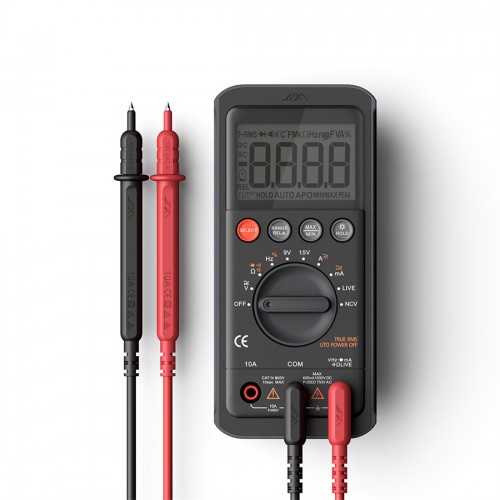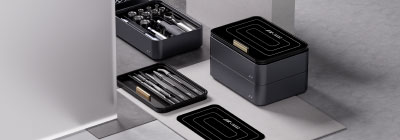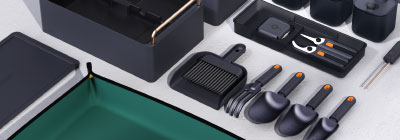
A comprehensive tool kit represents a builder's core advantage for fundamental tasks like measuring wood to driving screws with precision. This overview supplies skills to pick suitable tools and harness them effectively.
- Start by putting together a basic kit of necessary hand tools such as hammers, drivers, wrenches, pliers, saws, and tapes.
- Familiarize yourself with the functionality of each tool and its specific applications.
- Polish your approach by working on hands-on tasks and boosting complexity over time.
Remember that practicing with hand tools increases your craftsmanship. With solid understanding, tools extend your capabilities, letting you achieve complex projects confidently.
Boost Project Efficiency with Power Tools
Want to boost outcomes? Enter the powerful realm of tools that combine accuracy and efficiency. Such fundamental power tools can overhaul your workflow whether expert or enthusiast. From high-torque drills to fine-detail saws, power tools supply varied functions to manage construction jobs easily.
- Use cordless impact drivers for efficient fastening and teardown tasks.
- Become proficient with reciprocating saws to perform fast clean cuts in wood, metal and more.
- Improve woodworking outcomes via strong planers and jointers providing fine finishes.
Tap into power tool benefits to shorten completion times and enhance final outcomes.
Perfect Measurements Demystified
When detail is crucial, the right measuring gear alters quality considerably. From classic rulers to modern laser instruments, these tools provide dependable precision for projects. Whether veteran artisan or new hobbyist, mastering essential measuring tools opens many possibilities.
- Examine the variety of measuring tools tailored to multiple usage scenarios.
- Master the particular applications and perks of each measuring tool.
- Refine abilities in accurate measurement and proper implementation.
Kits Tailored to Every Project
From pros to hobbyists, a correct toolkit makes all the difference in projects. For tasks from screws to assembly, a quality set improves precision, workflow and safety. When choosing a set, reflect on which projects you will do most often.
Consider whether a broad tool collection or a concise specialized kit fits your needs? Once you know what you need, survey options to compare features, build quality and price. Make sure to read peer reviews online to gather useful perspectives before buying.
Through research and planning you'll identify the ideal kit to complete projects confidently.
Maintaining Your Hand Tools for Peak Performance
Caring for tools properly is critical for craftsmen and home builders. Neglected tools often develop dull edges, faults and disappointing performance. Ongoing maintenance preserves tool condition and ensures dependable years of service. Begin with wiping and cleaning tools post-use to clear grime and particles. Shelter tools in dry storage to minimize rust and corrosive damage.
- Sharpen cutting tools consistently with a stone or fine file.
- Oil moving components with suitable lubricant to minimize friction and wear.
- Monitor handle condition and replace any cracked or compromised pieces.

Following these basic care steps helps extend tool life and improve work efficiency and satisfaction.
Workshop Essentials: Hand Tools You Need
A stocked home workshop offers a great space for hobbyists and DIY practitioners. Special tools are handy yet basic hand tools form the backbone of project work. Essential picks include a dependable hammer, an adjustable wrench and a solid tape for accurate measuring. Remember to have varied screwdrivers, pliers for manipulation and a utility knife for slicing materials. A high-quality saw offers precise cuts and a level keeps work straight and balanced.
- Fundamental Hand Tools for Your Workshop

Mastering Power Tool Safety: A Complete Handbook
Power tools constitute robust equipment delivering significant power and productivity. But these machines also need an in-depth awareness of safety measures. Not following precautions can yield serious injury outcomes. This manual clarifies safety practices for power tools and equips you to operate safely.
Start out by learning your tools: read guides carefully and understand their protective features. Regularly wear PPE like safety glasses, earmuffs and protective gloves. Carry out routine maintenance to keep tools functioning properly.
Recall that safety stands as the primary concern in workshop settings. By sticking to these safety guidelines you can handle power tools with assurance.
Picking Accurate Measuring Tools
To achieve precise results, choosing appropriate measuring tools is crucial. A variety of measuring instruments are available, each designed for specific purposes. Knowing tool characteristics matters when making informed selections. Factor in accuracy, resolution and the measurement kind when deciding on tools.
- To measure lengths precisely, use a ruler or tape measure commonly.
- When measuring angles, a protractor is the fundamental tool.
- Electronic calipers work well for tiny measurements.
Selecting the correct instruments carefully provides accurate, trustworthy results.
Picking The Perfect Tool Set

Selecting a tool collection can bring excitement and occasional overwhelm. Facing numerous options often leads to decision overwhelm. This wide-ranging guide offers advice to pick the perfect tool set for your needs.
To begin, think about the projects you will be performing regularly. Are you a pro or a starter? Definitive goals assist in reducing options.
- Employ a blend of power and manual tools to reach productive and precise outcomes Employ a blend of power and manual tools to reach productive and precise outcomes Use both hand and power tools together when suitable for optimal, efficient results
- Emphasize primary essential items
- A solid hammer or suitable mallet or sledgehammer
- Screwdriver, wrench and plier sets: a versatile assortment is vital
- Tape and ruler for measurement tasks
- Tools for alignment: level, plumb bob, transit
Further considerations include the materials used in the construction of the tools, your budget constraints, and brand reputation. Remember durable tool purchases are investments for the long run.
Make DIY Easy: Proper Tool Use
Beginning DIY ventures often feels daunting. Yet with fitting tools and skillful knowledge, difficult tasks turn into wins. Begin with learning and getting familiar with your tools. Study the manuals and practice basic techniques in a controlled, safe setting. Always prioritize safety as your first consideration. Wear protective safety guard gear like goggles, gloves, and earplugs to shield protect defend yourself from potential hazards.
When it comes to choosing tools, quality durability sturdiness matters. Invest in reliable dependable trustworthy brands that will stand the test of time last for years serve you well.
Don't be afraid to ask consult seek advice from experienced DIYers or professionals at your local hardware home improvement building store. They can offer valuable tips insights suggestions on choosing the best most suitable ideal tools for your needs requirements projects.
- Ensure tools are sharp—a sharp tool improves safety and performance.
- Store your tools properly to prevent damage or loss.
- Expand your skills and knowledge through DIY
Deciding on Power or Hand Tools for Tasks
Tackling a project around the house or workshop? Deciding between power tools and hand tools can be a head-scratcher dilemma challenge. Despite power tools' efficiency and strength, hand tools still are essential for accuracy and small-scale jobs. Refer to this brief guide for choosing between power and hand tools.
- Hand tools are ideal perfect suited for finer detailed precise work like carving, assembling fitting constructing, and intricate repairs. Hand tools grant finer control and often present a more cost-effective choice.
- Power tools are preferable for swift, efficient actions like cutting, drilling, and large-scale sanding. They dramatically reduce time and manual labor required.
Ultimately, choosing the preferred tool relies on the job details, your level and budget. Utilize both categories of tools to achieve efficient, successful project results.
